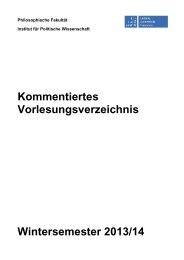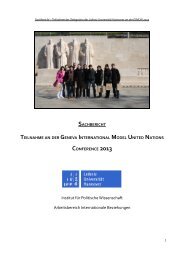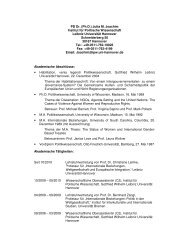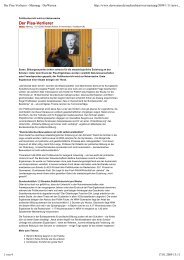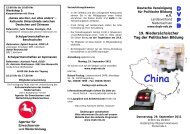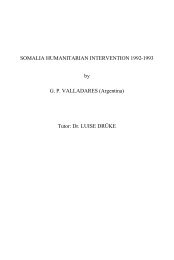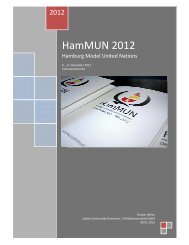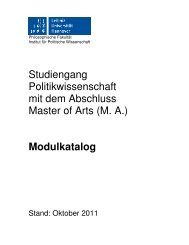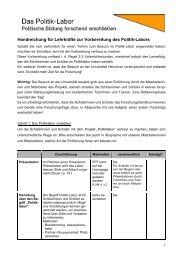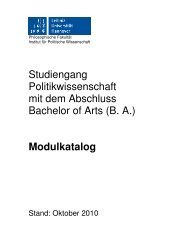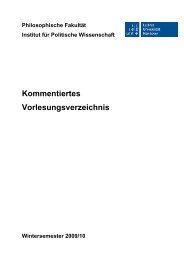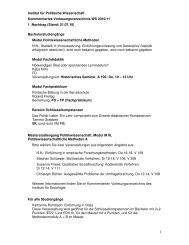Preventive Action for Refugee Producing Situations
Preventive Action for Refugee Producing Situations
Preventive Action for Refugee Producing Situations
You also want an ePaper? Increase the reach of your titles
YUMPU automatically turns print PDFs into web optimized ePapers that Google loves.
82 Chapter 3<br />
steady deterioration of asylum practices by some Southeast Asian states,<br />
the Secretary-General appealed on his return to the heads of concerned<br />
governments <strong>for</strong> their help and cooperation. 164 The Prime Minister of the<br />
United Kingdom responded in a letter of 31 May 1979 to the Secretary-<br />
General, proposing that he convene an international conference to deal with<br />
the problem. 165 In addition, the Tokyo Economic Summit Conference of<br />
industrialized countries issued a statement on 28 June 1979 confirming<br />
their commitment to increase their support <strong>for</strong> relief and resettlement of<br />
Vietnamese refugees, and also requesting the Secretary-General to convene<br />
a conference to attain concrete results.<br />
In response, the Secretary-General convened a meeting <strong>for</strong> 20 and 21<br />
July 1979. Sixty-five governments attended, including Vietnam, as well as<br />
observers from several other governments and a number of interested<br />
intergovernmental organizations and nongovernmental organizations. The<br />
meeting resulted in a significant increase in the amount of financial support<br />
and the number of resettlement places offered by countries throughout the<br />
world. 166 One of the demands by the states of the Association of South East<br />
Asian Nations (ASEAN) had been not to be left with a huge residual<br />
caseload of refugees with no other place to go. Both Thailand and Malaysia,<br />
who had been faced with the largest number of refugees, had made<br />
declarations in mid-1979 that no new boat people would be allowed to land<br />
on their shores. Indonesia followed their example, just at the same time as<br />
the Thai authorities were pursuing a policy of returning Kampuchean<br />
refugees who had crossed into Thalland after the Vietnamese invasion. 167<br />
During the July Meeting in Geneva, the Socialist Republic of Vietnam<br />
agreed to a proposal, originally put <strong>for</strong>ward by France, 168 to "limit refu-<br />
Kampucheans" remained under the prerogative of the Military Supreme Command,<br />
and were in principle excluded from resettlement abroad.<br />
164 A/34/627," 1979 Meeting on <strong>Refugee</strong>s in SEA," p. 3.<br />
165 A/34/627, "1979 Meeting on <strong>Refugee</strong>s in SEA," p. 4.<br />
166 The final results were: 1.) An increase in resettlement places from 125,000 in<br />
May 1979 to 260,000 at the end of the meeting; 2.) Announcements of<br />
pledges <strong>for</strong> approximately $160 million in cash and in kind contributions; 3.)<br />
A proposal to set up a $25 million fund to search <strong>for</strong> durable solutions: 4.) An<br />
offer to accommodate 50,000 refugees in refugee-processing centres; and 5.)<br />
An expansion of the ODP and practical arrangements regarding the problem<br />
of rescue at sea. See A/34/627, "1979 Meeting on <strong>Refugee</strong>s in SEA," p. 7.<br />
167 Milton Osborne, "The Indochinese <strong>Refugee</strong>s: Cause and Effects,"<br />
International Affairs, 56 (1980), p. 47.<br />
168 Gordenker, <strong>Refugee</strong>s in International Politics, p. 158.<br />
Analytical Discussion 83<br />
gee outflow '<strong>for</strong> a reasonable period of time.'" 169 With Vietnam consenting<br />
to a moratorium on <strong>for</strong>ced expulsion of its citizens, and other countries<br />
agreeing to pick up the refugee slack, the main actors dealing with the<br />
refugee situation in Southeast Asia <strong>for</strong>ecast a speedy end to the crisis - as<br />
early as the end of 1979. The numbers of arrivals in first asylum countries<br />
did indeed drop dramatically from nearly 55,000 in June to about 2000 per<br />
month by the end of 1979. The ethnic composition of the arrivals reversed<br />
as well, from more than 80 percent Vietnamese of Chinese ethnic origin<br />
be<strong>for</strong>e the July meeting to barely 20 percent in September 1979. 17 °<br />
Interviews with each group of Vietnamese boat people newly arriving in<br />
Singapore after being rescued at sea showed that during the period between<br />
the July Geneva Conference and<br />
end of September, most of the refugees arriving in Singapore were ethnic<br />
Vietnamese and only a small percentage ethnic Chinese, a statistic that offers<br />
further strong evidence that the exodus of refugees of Vietnam has been an exodus<br />
controlled by Hanoi and designed to expel Vietnam's Chinese population. 171<br />
With 132,845 departures <strong>for</strong> resettlement countries during 1979, the<br />
Vietnamese refugee camp population stood at 140,436 in December of that<br />
year. 17 2 Considering how easily the crisis could have degenerated into an<br />
unprecedented and unpredictable situation, jeopardizing regional political<br />
and security interests, the results obtained from the 1979 Geneva Meeting<br />
helped contain the flow of refugees to manageable proportions and defuse<br />
serious tensions. The meeting resulted in international preventive actions<br />
that worked. Even though Vietnam seems to have honored at least <strong>for</strong> the<br />
"reasonable period of time" its commitment not to generate refugees in<br />
1979, the outflow still continues. It has motivated various governments and<br />
international organizations to keep the situation under close scrutiny, with a<br />
view to developing new responses to it. Among other studies, a survey by<br />
Senator Edward Kennedy's office on the occasion of a mission to Thalland<br />
in 1984 examined the motives <strong>for</strong> leaving of 471 Vietnamese who had<br />
arrived in Thalland by boat between<br />
__________________<br />
169 Osborne, p. 51.<br />
170 On the hand file of the author.<br />
171 St. Cartmail, p. 234.<br />
172 Margaret Dyer Chamberlain, "Vietnamese Boat People Crisis - Case Study",<br />
(Draft), Lance Clark (ed.) [hereinafter cited as Chamberlain/Clark, "Boat<br />
People Crisis,"] <strong>Refugee</strong> Policy Group, September 1986, p. 8.



